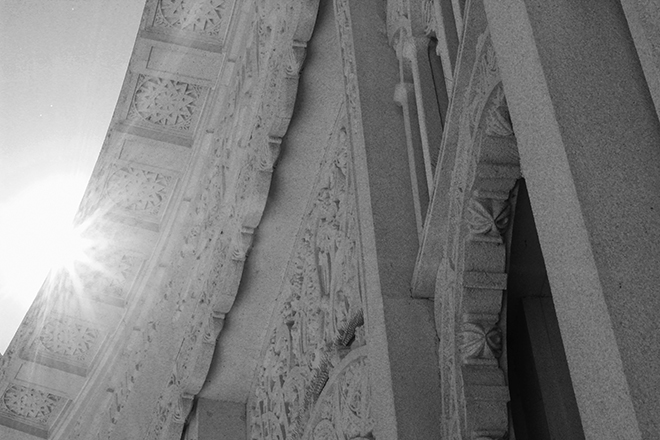 Bordering Evanston and Wilmette, the Baha'i Temple aims to emphasize its three fundamental beliefs through architecture: the oneness of God, the oneness of humanity and the oneness of religion.
Lucy Wang / North by Northwestern
Bordering Evanston and Wilmette, the Baha'i Temple aims to emphasize its three fundamental beliefs through architecture: the oneness of God, the oneness of humanity and the oneness of religion.
Lucy Wang / North by Northwestern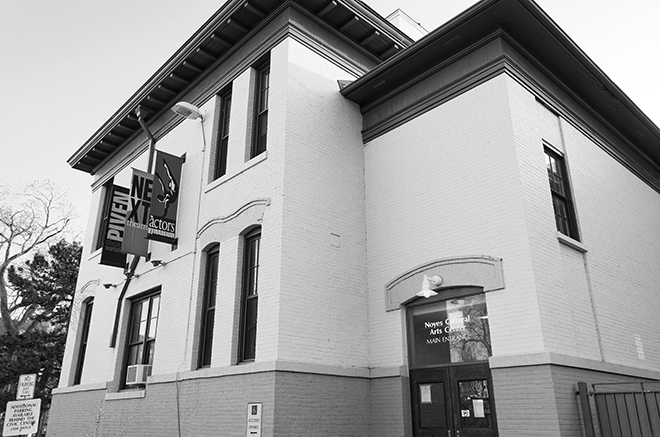 In 1892, the Noyes Cultural Arts Center was designed as an elementary school by acclaimed architect Daniel Burnham. In 1980, the City of Evanston transformed the building into the community arts center it is today.
Alex Zhu / North by Northwestern
In 1892, the Noyes Cultural Arts Center was designed as an elementary school by acclaimed architect Daniel Burnham. In 1980, the City of Evanston transformed the building into the community arts center it is today.
Alex Zhu / North by Northwestern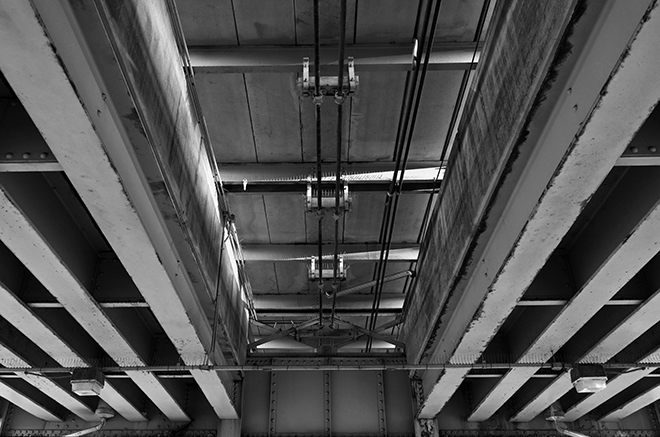 Located at 909 Noyes Street, the Noyes El station is the second-to-last station on the Purple Line.
Alex Zhu / North by Northwestern
Located at 909 Noyes Street, the Noyes El station is the second-to-last station on the Purple Line.
Alex Zhu / North by Northwestern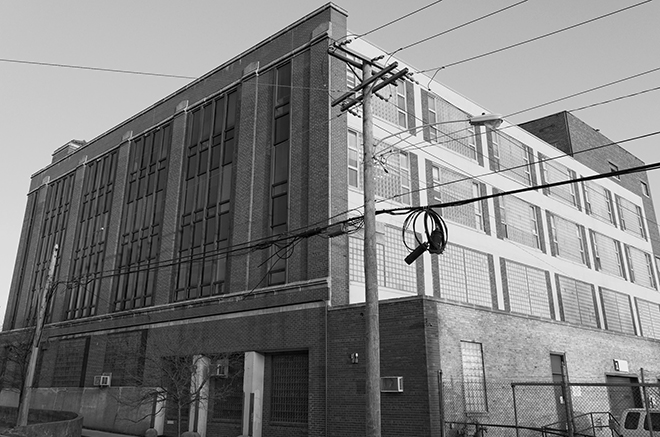 The building at 2020 Ridge houses Northwestern's Motor Pool, among other offices.
Alex Zhu / North by Northwestern
The building at 2020 Ridge houses Northwestern's Motor Pool, among other offices.
Alex Zhu / North by Northwestern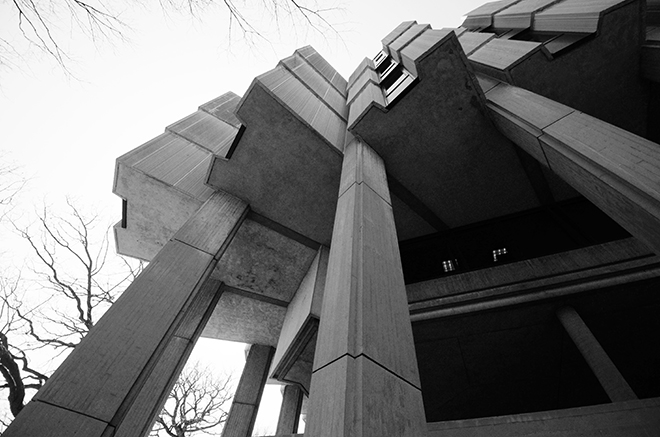 Designed in the 1960s by architect Walter Netsch, the University Library houses over 4.6 million volume.
Rosalie Chan / North by Northwestern
Designed in the 1960s by architect Walter Netsch, the University Library houses over 4.6 million volume.
Rosalie Chan / North by Northwestern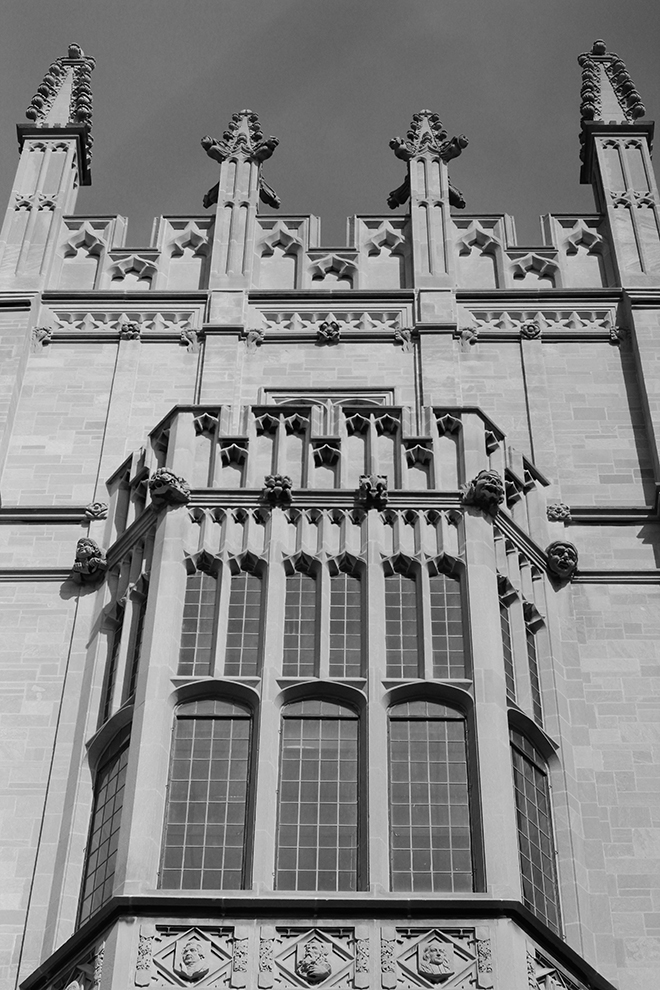 Nestled on north campus, the Garrett-Evangelical Theological Seminary features towering Gothic spires.
Lucy Wang / North by Northwestern
Nestled on north campus, the Garrett-Evangelical Theological Seminary features towering Gothic spires.
Lucy Wang / North by Northwestern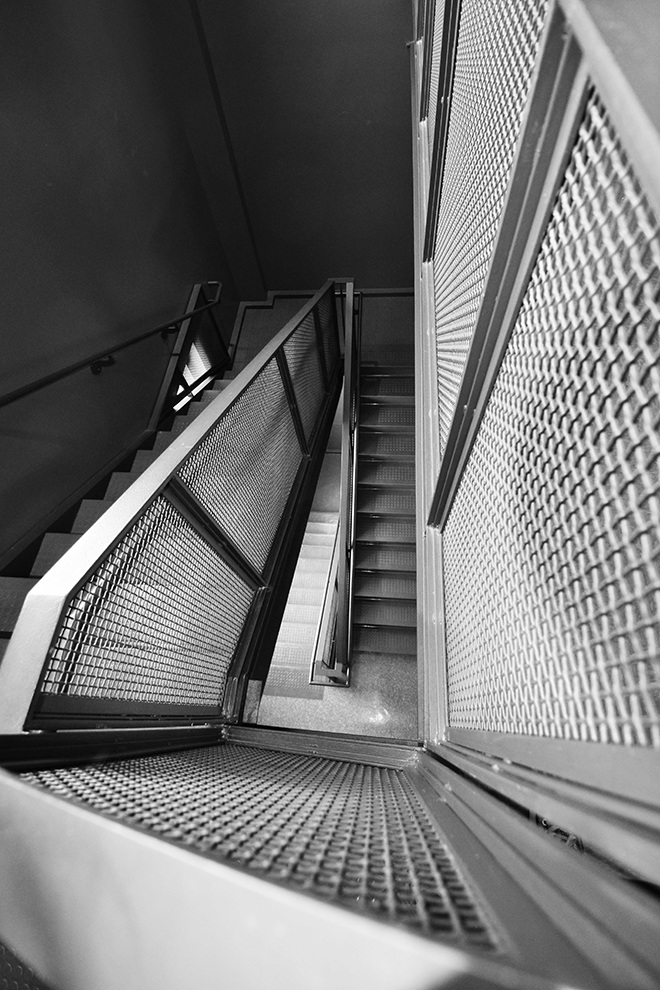 Kresge Hall first opened in 1954 and was built to commemorate Northwestern's 100th anniversary.
Rosalie Chan / North by Northwestern
Kresge Hall first opened in 1954 and was built to commemorate Northwestern's 100th anniversary.
Rosalie Chan / North by Northwestern With intricate window panes on each side of the structure, the Lake Street Church of Evanston is a self-described "progressive" church, practicing modern Christian theology, which is open to people of all religious beliefs.
Olga Gonzalez Latapi / North by Northwestern
With intricate window panes on each side of the structure, the Lake Street Church of Evanston is a self-described "progressive" church, practicing modern Christian theology, which is open to people of all religious beliefs.
Olga Gonzalez Latapi / North by Northwestern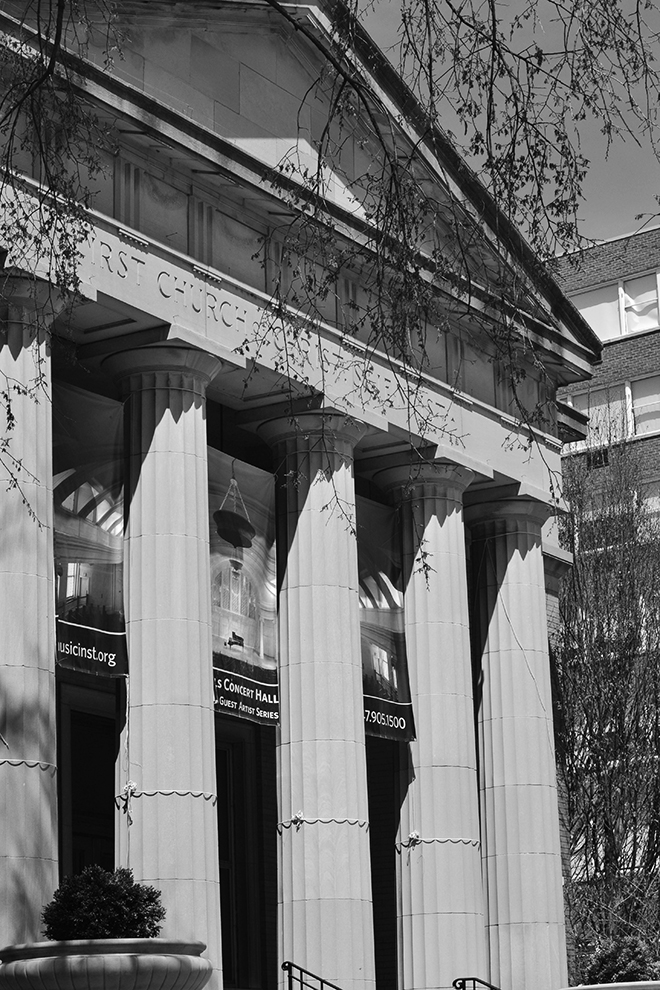 The Music Institute of Chicago, on the 1400 block of Chicago Avenue, hosts events in its Nichols Concert Hall and offers music classes to people of all ages.
Olga Gonzalez Latapi / North by Northwestern
The Music Institute of Chicago, on the 1400 block of Chicago Avenue, hosts events in its Nichols Concert Hall and offers music classes to people of all ages.
Olga Gonzalez Latapi / North by Northwestern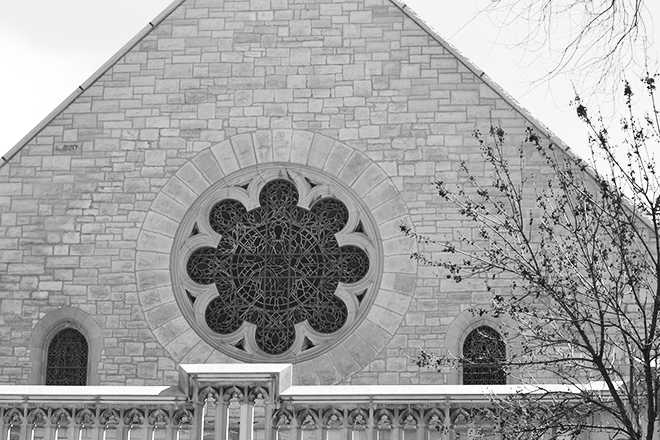 The First Presbyterian Church, located five blocks south of the NU Arch, is part of the Presbyterian Church group in the U.S.A. and bases its religious message on the church reformation movement of the 16thth century.
Olga Gonzalez Latapi / North by Northwestern
The First Presbyterian Church, located five blocks south of the NU Arch, is part of the Presbyterian Church group in the U.S.A. and bases its religious message on the church reformation movement of the 16thth century.
Olga Gonzalez Latapi / North by Northwestern
A closer look into Evanston architecture
Since the construction of University Hall in 1869, Evanston's architecture has witnessed an evolution from Gothic to Modern. Here are some buildings and structures that have caught our eye.